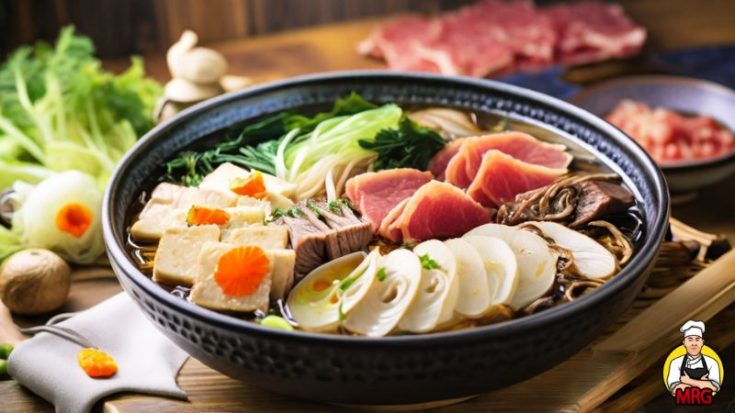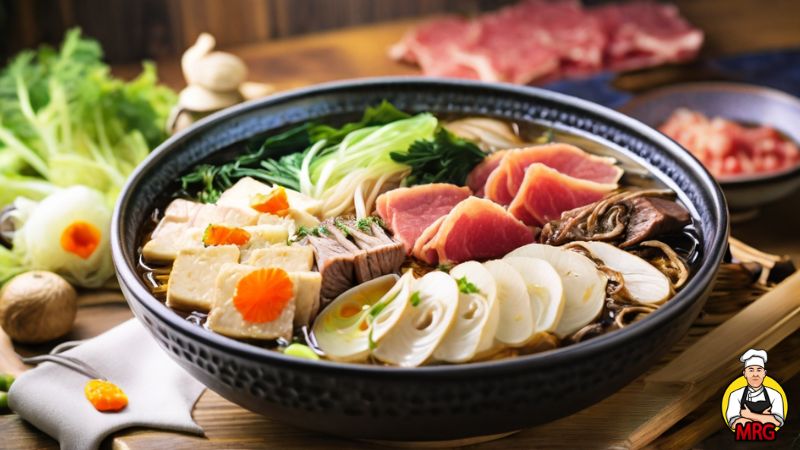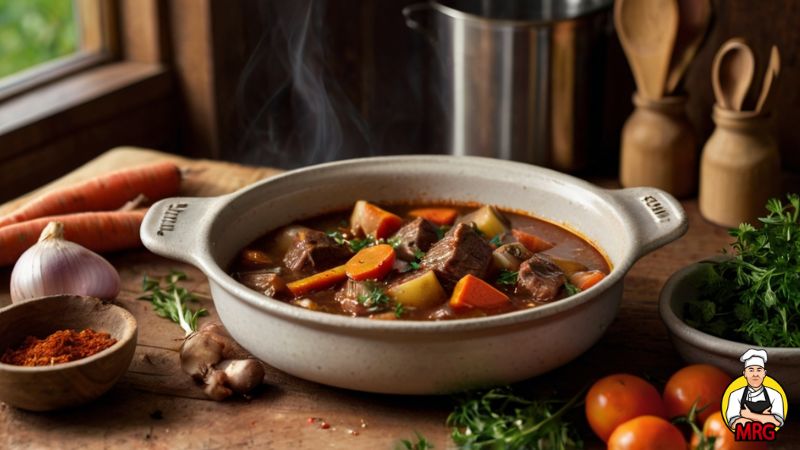Beef sukiyaki is not just a dish; it’s a delightful culinary experience that brings people together. Originating from Japan, this hot pot is a perfect blend of savory and sweet, with succulent slices of beef simmered in a rich sauce alongside a variety of vegetables and other ingredients. Ideal for family gatherings or a cozy meal, sukiyaki is versatile enough for a casual dinner or a festive occasion.
Choosing the Right Main Ingredient: What Makes the Perfect Sukiyaki Beef?
When it comes to sukiyaki, the choice of beef is paramount. Look for high-quality, marbled beef as it melts tenderly in the pot, enriching the broth with its flavorful fat. But how do you pick the best cut? And what about the ethical considerations of beef sourcing? Let’s delve into these questions.
Seasoning Your Sukiyaki: Achieving the Perfect Balance
What about the seasoning that defines sukiyaki? The delicate dance of dashi, sake, mirin, and soy sauce creates a broth that’s both deep and invigorating. How do you balance these flavors to enhance, not overpower, the natural taste of the beef and vegetables?
Recommended Cooking Equipment and How to Use It Effectively
To bring your sukiyaki to life, the right cooking equipment is essential. A cast-iron or heavy-duty pot, traditionally a “sukiyaki-nabe”, is ideal for its even heat distribution. But equally important is how you use this pot. Here’s how to maximize the effectiveness of your sukiyaki cooking equipment:
Setting Up Your Sukiyaki Station
Place your cast-iron pot on a portable stove at the center of the dining table. This setup not only allows for even cooking but also turns the meal into an interactive experience where everyone can cook their preferred ingredients to their liking.
Managing the Heat
Maintain a gentle simmer. The beauty of sukiyaki is in how the ingredients gradually meld flavors without boiling vigorously. This ensures that the beef remains tender and the vegetables crisp, soaking up the broth without disintegrating.
Sequential Cooking
Start by rendering some beef fat in the pot to create a natural non-stick surface and add a base flavor. Then, layer in other ingredients based on their cooking times. Firmer vegetables and proteins that need longer cooking times should go in first, followed by more delicate items like tofu and mushrooms.
Using Chopsticks
Opt for long cooking chopsticks to handle ingredients without crowding the pot. This technique allows you to stir gently, ensuring all elements cook evenly while maintaining their integrity.
Crafting the Perfect Beef Sukiyaki Recipe
Embarking on the sukiyaki journey requires attention to detail. Here’s how to create an authentic and delicious beef sukiyaki that will impress any diner.
Traditional Beef Sukiyaki

Traditional Beef Sukiyaki is a recipe close to my heart, capturing the essence of Japanese culinary tradition in each simmering pot. The harmony of tender beef with the sweetness of mirin and the depth of soy sauce creates not just a meal, but a cherished, warm dining experience to be shared with loved ones.
Ingredients
- 400g thinly sliced marbled beef
- 1 medium-sized onion, sliced
- 1 leek, cut into 2-inch pieces
- 200g shiitake mushrooms, stems removed
- 1 block tofu, cut into cubes
- 1 bunch of spinach, trimmed
- 200g noodles (udon or shirataki)
- 1 cup dashi broth
- 2 tablespoons soy sauce
- 2 tablespoons mirin
- 2 tablespoons sake
- 1 tablespoon sugar
- 1 piece kombu (seaweed)
- Raw eggs (one per person), optional for dipping
Instructions
- Prepare the Warishita Sauce: In a bowl, mix soy sauce, mirin, sake, and sugar until the sugar dissolves.
- Heat the Pot: Place the kombu in the pot, add dashi, and heat until just before boiling, then remove the kombu.
- Cook the Beef: Lightly grease the pot with a small piece of beef fat, then layer half of the beef to sear until lightly browned.
- Add Ingredients Sequentially: Introduce onions, leek, and mushrooms, and cook for a few minutes. Add the remaining beef and tofu. Pour the warishita sauce over the ingredients.
- Simmer: Let the ingredients simmer, then add spinach and noodles. Cook until the spinach wilts and the noodles are heated through.
- Serve: Transfer to serving bowls. Provide raw eggs in individual bowls for dipping, if desired.
Nutrition Information:
Yield:
4Serving Size:
1Amount Per Serving: Calories: 320Total Fat: 18gCarbohydrates: 15gProtein: 25g
Serving Suggestions and Suitable Side Dishes
Serve your beef sukiyaki with a side of steamed rice or extra noodles to soak up the delicious broth. Consider complementing the meal with side dishes such as miso soup, pickled vegetables, or a simple green salad to contrast the rich flavors of the sukiyaki.
Cooking Tips and Common Mistakes to Avoid
- Avoid Overcooking: Sukiyaki is best when the ingredients are just cooked, retaining their individual textures.
- Layer Flavors: Add ingredients in stages to build a complex flavor profile without any single ingredient overpowering the others.
- Balance the Broth: Taste and adjust the seasoning of your warishita sauce, keeping in mind the inherent saltiness of soy sauce and the sweetness of mirin and sugar.
- Thinly Slice the Beef: Ensure your beef slices are thin for quick cooking and to allow them to absorb the broth flavors fully.
Conclusion: Mastering the Art of Sukiyaki
Making sukiyaki at home is a rewarding experience that offers a glimpse into the rich culinary culture of Japan. By following this detailed guide, you’re not just cooking; you’re creating a meal that brings people together, offering a warm, shared experience that goes beyond simple dining. Enjoy the process and the delicious results!
Related Article:
I’m Calvin Lamb, an LA-based culinary enthusiast with a decade’s experience in five-star kitchens. My innovative dishes, inspired by seasonal flavors and sustainable practices, blend classic and modern cuisine. Besides crafting unique culinary experiences, I relish exploring new eateries and devising fresh recipes.



